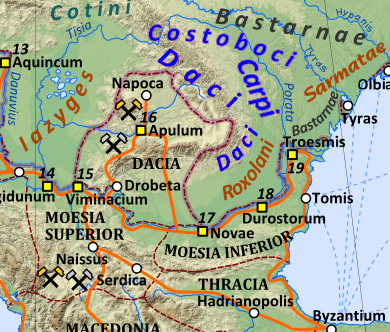
Photo 1: The inscribed statue base of the Roman general Marcus Claudius Fronto, preserved in the Lapidary of National Museum of Banat – Timișoara (photo Claudiu Toma)
The base of the inscribed statue is part of a group of epigraphic pieces brought to the Museum of Banat in Timișoara in 1974 from the park of the Banloc Castle (Timiș County). It was originally discovered in 1832 in the forum of Ulpia Traiana Dacica Augusta Sarmizegetusa (the capital and the largest city of Roman Dacia, on the territory of modern Romania) and published by the famous historian and epigraphist Theodor Mommsen in the prestigious Corpus Inscriptionum Latinarum (CIL III, 1377 = IDR III / 2, 90).
Photo 2: The publisher of the Fronto Inscription, the epigraphist Theodor Mommsen (foto source: Wikipedia)
Photo 3: Corpus Inscriptionum Latinarum, where the Fronto Inscription was commented and published for the first time (foto source: Wikipedia)
The "queen of inscriptions" in the National Museum of Banat, as this epigraph is sometimes called, has a very neat text, with capital letters aesthetically carved in stone and dates back to 170 AD, during the reign of Emperor Marcus Aurelius. The statue and its base were erected by the community leaders of Colonia Sarmizegetusa in honor of the general Marcus Claudius Fronto, who later became governor of the province of Dacia, and patron of the colony: a senatorial figure with old roots in the equestrian order.

Photo 4: The Forum of Colonia Ulpia Traiana Augusta Dacica Sarmizegetusa, important city of Roman Dacia, the place where the statue of Marcus Claudiu Fronto was erected.
The text is a dedication to this illustrious general and his noble affiliation, with an invocation of his career, in the reverse order of the functions / missions performed, including both his deeds of arms and the distinctions received from Emperor Marcus Aurelius and Lucius Verus during the Parthian War (165-166 AD).

Photo 5: The two brothers: Emperors Marcus Aurelius and Lucius Verus (source: British Museum)
The elegant inscription made of a single massive block of gray marble, beautifully proportioned, with a simple classic border indicates the high appreciation the ordo decurionum (city hall) showed to Fronto for his bravery, which had positively impacted the Roman citizens of Dacia.
The inscription was created in the turbulent context of the outbreak of the Marcomannic wars (167-168 AD), which was characterized by virulent attacks of neighboring barbarian nations. As a result, even the urban and spiritual center of Dacia was robbed and set on fire. The rescue intervention of General Fronto, at the head of a military corps that included the 5th Macedonian Legion (which would later remain in Dacia at Potaissa (present day Turda), indicates the gravity of the situation.
Photo 6: Roman Dacia in 2nd century AD and the neighboring barbarian tribes (source: Wikipedia)
Photo 7: Map of the Roman Empire during the Marcomanic Wars (source: omniatlas.com)
Photo 8: Battle representation on the Column of Marcus Aurelius (source: Wikipedia)
Photo 9: Coin from Marcus Aurelius with a representation of Victory
To restore order, Marcus Claudius Fronto received increased authority over two provincial armies, that of Dacia and Upper Moesia (today's Serbia). His mission was to form a strong expeditionary force and attack the Iazyges, a Sarmatian tribe, and to transform their territory into a Roman province. However, the plague that broke out in the Roman Empire decimated the troops, from the most insignificant auxiliary unit to the elite corps of the Praetorians.
It is not known exactly if Fronto himself died of the plague during that expedition or died in battle, the certain fact is that he never returned. This is also certified by a post-mortem statue and inscription in Rome, where he is depicted in armor, a sign that he died in battle, and where his entire military career is mentioned. Immediately after his death, to stop the barbarian raids into the Dacian territory, the command was taken over by the experienced governor Sextus Cornelius Clemens, another prominent senator of his generation.
The Sarmizegetusa inscription mentions General Fronto as fortissimo duci, amplissimo praesidi superlative words of praise, related to his energetic interventions that saved the three provinces of Dacia (Dacia Porolissensis, Dacia Superior and Dacia Inferior) from the barbarian gangs.
Photo 10: The inscribed statue base of general Fronto, side view (photo: Ortolf Harl, source: ubi-erat-lupa.org)

With the receival of 5th Macedonian Legion, the status of former Dacia Felix changed from imperial province of praetorian rank to imperial province of consular rank. With Fronto began a deep administrative reform of the three Dacias, focused primarily on finances. In addition to Dacia Porolissensis, which retained its name and territorial extent, the old provinces of Dacia Superior and Dacia Inferior received new names: Dacia Apulensis and Dacia Malvensis after the seat of the procurators’ offices.
Kept in mint condition, with a full text which refers to an important statesman mentioned by numerous other literary and epigraphic sources, the monument in the collections of the Lapidary of the National Museum of Banat is an exceptional piece of great historical, epigraphic, and curatorial value.
Text and video presentation by archaeologist CĂLIN TIMOC of The National Museum of Banat. A film by ANA TUDOR and ADRIAN TUDOR.
The third season of THE HISTORY OF ROMANIA IN ONE OBJECT, our online program that evokes decisive epochs in Romania's past starting from objects with powerful symbolic and representative value, is developed in partnership with The National Museum of Banat in Timișoara and Timiș County Council.











